Chinatown in Saigon is among the biggest in the world. Known as Cholon or Cho Lon - which translates as big market - it dates back to the eighteenth century.
Saigon’s Chinese population has a long history in the city - fleeing the collapse of the Ming Dynasty in the 17th century. In the centuries since, Chinese immigrants have continued to arrive. They’ve played a big role in the cultural and economic life of the city from dynastic times, through French colonialism, the Vietnam War, right through to the present.
Cholon has also been the scene of dramatic events in Vietnam's modern history.
In November 1963, South Vietnamese President Ngo Dinh Diem fled his palace in downtown Saigon for Cholon’s Cha Tam Catholic church. He was captured there and murdered by coup plotters in one of the most significant events in the lead-up to the Vietnam War. There is a small plaque marking the pew where Diem spent his final hours.
In 1968, Cholon was a key battleground in the Viet Cong Tet Offensive. One of the most famous photos from the Vietnam War, Eddie Adams’ shocking image of the execution of a Viet Cong prisoner by General Nguyen Ngoc Loan was taken at the height of the fighting.

Photo: Mark Bowyer Thien Hau Pagoda, Cholon
Modern-day Cholon is home to Chinese temples, churches and some outstanding colonial and post-colonial architecture. There’s some impressive eating to be found too - from street stalls to Chinese restaurants.
The places we list here are all located close by one another and can easily be reached on foot or cyclo once in Cholon. Make sure you also take some time to cruise the packed streets and explore the alleys.
Walking Cholon
It’s easy to walk around the main heart of Cholon. The traffic is intense in some areas. Try and explore the alleys as much as possible. Start at Thien Hau Pagoda and roam from there.
Apart from the buzzing street life, you’ll pass by a mix of architecture - from temples to shophouses to modernist classics.
For now, Cholon's heritage architecture seems to be holding up better than downtown Saigon. There have already been some tragic demolitions though - and we fear there are more coming.

Photo: Mark Bowyer Down an alley - Cholon
Binh Tay Market
Binh Tay market is the heaving wholesale market of Cholon. Food, clothing, pottery and plenty more are lined up in narrow corridors packed with stalls in this local institution dating back decades.
Watching the arrival of additional inventory on bicycles, motorcycles and an assortment of other curious road craft is part of the fun.
Binh Tay Market is under renovation (early 2018). We expect these to continue for another year. The market stalls have relocated to temporary structures around the main market structure. It was a mess during our visit and probably not worth a whole lot of time.
Thien Hau Pagoda
The most popular and one of the impressive of Cholon’s Chinese pagodas, the temple is dedicated to Thien Hau, Goddess of the Sea. When the temple was established in mid eighteenth century, the Chinese community tended to be made up of merchants and seafarers who were grateful for the Goddess’s protection.
The temple’s significance was reinforced again the in late 1970s when many from Cholon’s Chinese community fled Vietnam in small boats following China’s invasion of northern Vietnam.

Photo: Mark Bowyer Thien Hau Pagoda, Cholon
Quan Am Pagoda
Nearby Quan Am Pagoda is another favourite. It was established by Cholon’s Fujianese community and dedicated to the Goddess of Mercy. A recent renovation has removed some of its edge but it’s still worth visiting.
Phuc An Hoi Quan Pagoda is also close by.
Cha Tam Church (under renovation 2024)
Cha Tam church’s significance lies mainly in its bit part in the demise of South Vietnamese President, Ngo Dinh Diem in November 1963.
It was here that the devoutly Catholic Ngo Dinh Diem fled and was holed up having fled the coup from Gia Long Palace - now the Ho Chi Minh City Museum - in downtown Saigon.
His prayers came to nothing and he was captured and murdered by members of his own military, in an event considered pivotal in the unravelling of South Vietnam and an increased US involvement in the Vietnam war.
The Kennedy administration was implicated in the coup and Kennedy himself was assassinated just weeks later.
A small plaque marks the pew where Diem and his brother Nhu sat before their capture.
Cha Tam Church is a quaint little place that dates back to the beginning of the twentieth century. It was built by Father Tam (Cha Tam in Vietnamese) and he’s buried right at the entrance.
It’s a welcome refuge from the chaos of Cholon.

Photo: Mark Bowyer Cha Tam Church, Cholon - Chinatown
Street food in Cholon
There are street stalls everywhere in Cholon. There are also some excellent Chinese restaurants. We haven’t had a proper meal here for a long time but we’ve dipped into the noodle stalls at the corner of Lao Tu and Phung Hung St. This is a great spot and a worthwhile stop for a bite.
For siu cao (wonton soup), head to Ha Ton Quyen St for a street packed with options.

Photo: Mark Bowyer Street food, Cholon - Chinatown
Travel tips
Cholon is 10 - 15 minutes from downtown Saigon by taxi.

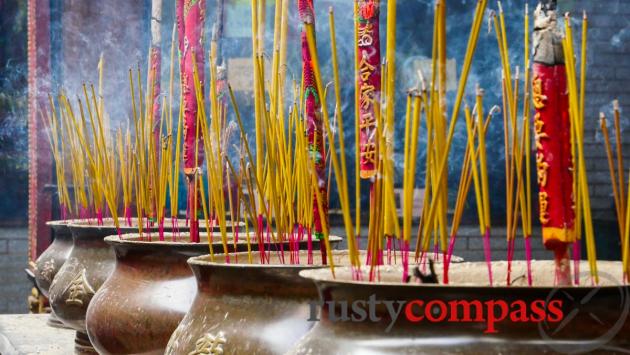
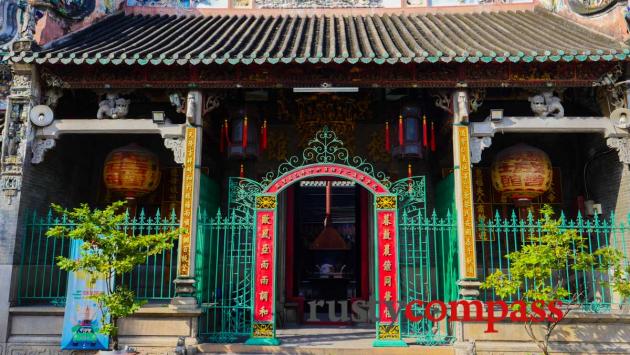
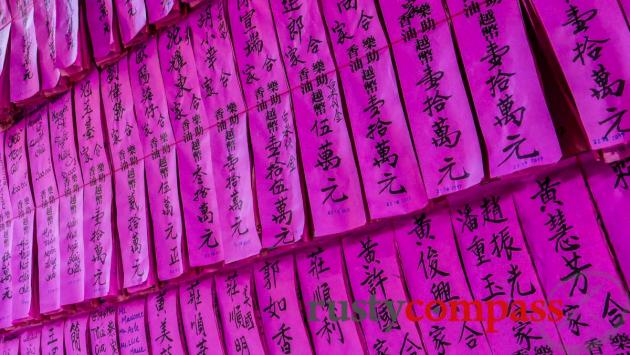
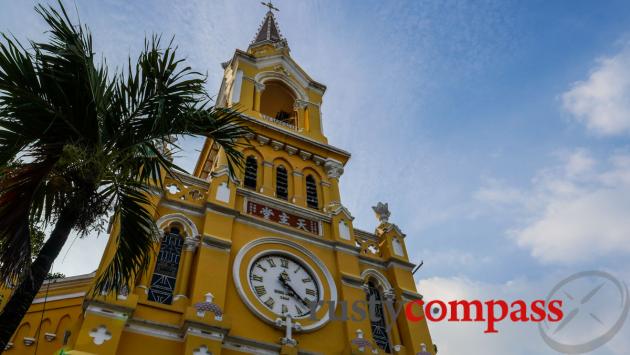
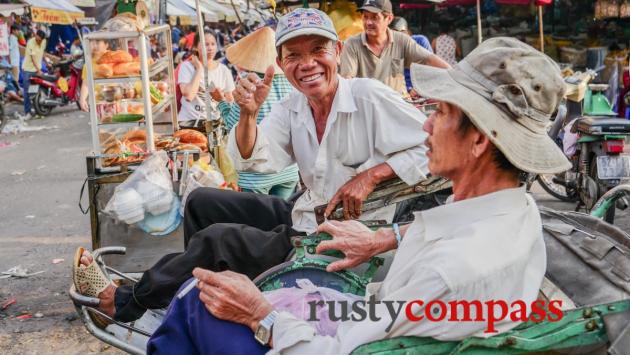
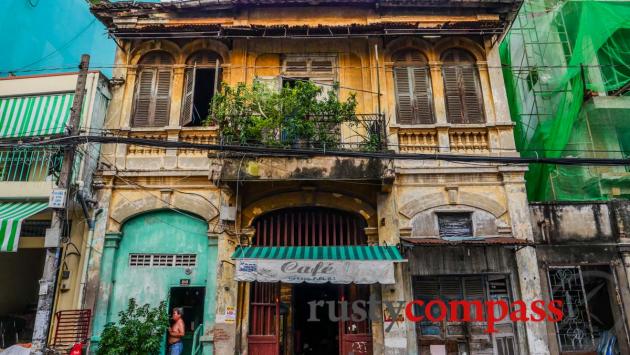
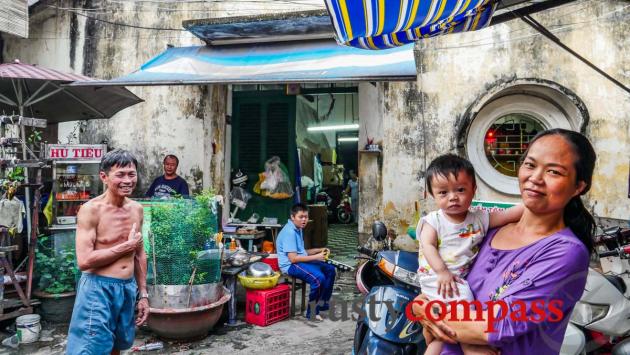
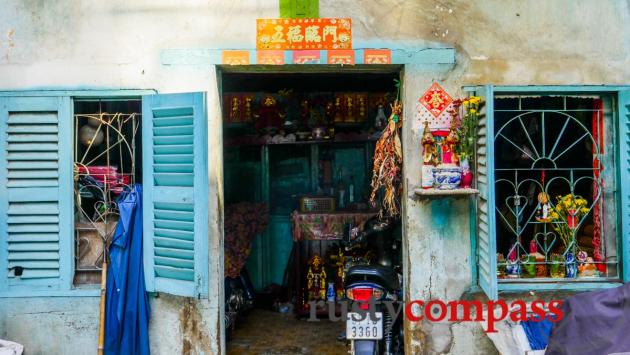
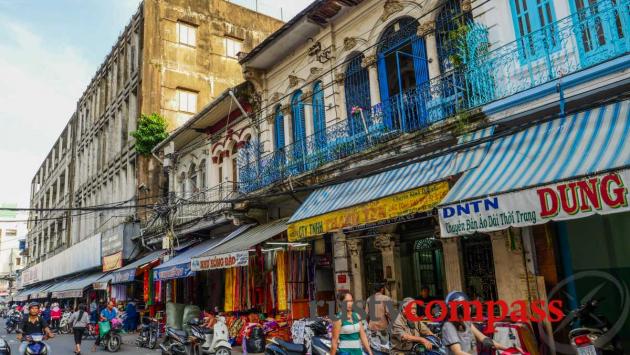







There are no comments yet.